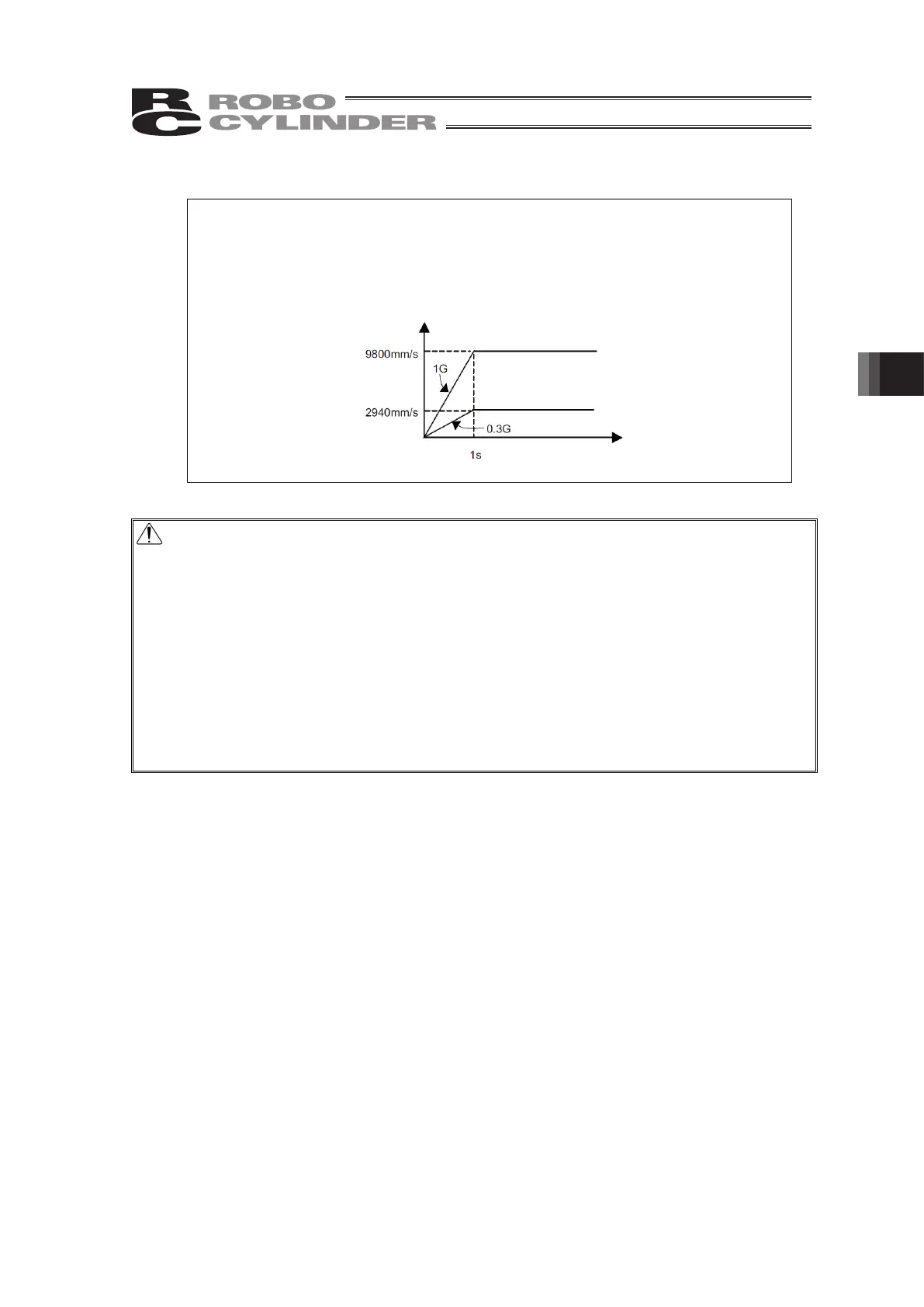5. Operation of MEC Related Controllers
277
4) Decelerate [G] Set the deceleration (G) at which the actuator stops.
(Reference) Acceleration is explained. The same concept applies to deceleration.
1 G = 9800 mm/s
2
: Acceleration at which the actuator can accelerate to
up to 9800 mm/s per second
0.3 G: Acceleration at which the actuator can accelerate to up to 9800
mm/s
0.3 = 2940 mm/s
Caution: Setting the acceleration/deceleration
(1) Make sure the acceleration/deceleration you set does not exceed the rated
acceleration/deceleration stated in the catalog or the instruction manual of the
actuator. If the rated acceleration/deceleration is exceeded, the life of the
actuator may drop significantly.
(2) If the actuator or work part receives impact or vibrates, lower the
acceleration/deceleration. If the actuator is used continuously in such condition,
the life of the actuator will drop significantly.
(3) If the transferable weight is significantly smaller than the rated payload capacity,
accelerations/decelerations greater than the rating may be set. You can shorten
the tact time this way, so contact IAI if you are interested. When contacting IAI,
let us know the weight, shape and installation method of the work part as well as
installation condition of the actuator
horizontal/vertical
.
5) Push power [%] Set the push torque (current-limiting value) to be used in push-motion
operation as a percent (%) value.
Increasing the current-limiting value increases the push force.
If “0” is set, positioning operation is performed.
For the relationship of push force and current-limiting value, refer to
the catalog or the instruction manual."
6) Push band [mm] Set the travel during push-motion operation.
When push-motion operation is performed, the actuator moves at the
speed and rated torque set as part of positioning information, just like
normal positioning, until the remaining travel enters the range set
here. Once the remaining travel enters this range, the actuator moves
to the position set in [1] while pushing the load.
The speed of push-motion operation is set in parameter No. 7. Do not
use any setting that causes this speed to be exceeded.
If the setting in [2] is less than the push speed, the actuator pushes
the work part at the set speed.
How the actuator operates as it pushes the work part toward the end
point, start point and intermediate point is illustrated below.
Speed
Time
